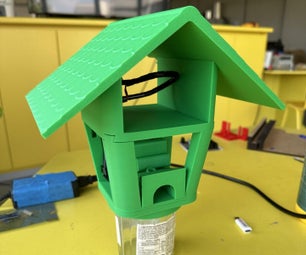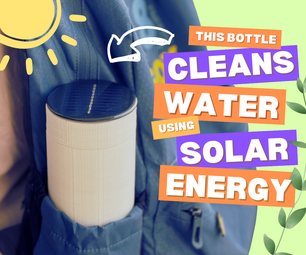Introduction: Dry Film Solder Mask
This Instructable is about dry film solder mask, in other words, is the green stuff that is on top of the circuit board.
I like to use smd components in my circuits board because I don't have a computerized drill machine and do in it by hand for a big
boards are really tedious.
Soldering smd components in a copper board without dry solder mask, especially for those little capacitors and resistor of 402 in size, becomes a tough challenge and of course those micro controllers with almost zero space between pins.
So I decided to use the UV curable Ink, sounded very good on those ebay stores with before and after pictures.
I bought a couples of syringes with a success of just one time, 0.1% of my tires worked with a pretty ugly board with an uneven surface an the pads and vias where not square are rounded.
The Ink sometimes cured, other times it didn't. Applying the art work is somehow complicated because you have to put it over a wet paint unless you find this miracle tape that is sold in the shipping supplies that is glossy on one side and barely stick to the paint, but not always.
What is for sure is that you are going to get messy and the ink is nothing easy to take out of your hands.
I did a little more research in the web and I found this dry film solder mask, at least is dry meaning no mess and easy to handle.
I tried and worked wonderfully, no mess, easy, fast and your board looks almost comparable with the professional ones.
to buy the film you can go to my ebay page at this location:
http://www.ebay.com/itm/Dry-Film-Solder-Mask-5-sheets-of-12-x-8-5-in-/150921619738?pt=LH_DefaultDomain_0&hash=item2323a1291a
You can check out these two videos from Youtube:
http://www.youtube.com/watch?v=SDIycwAghL4
http://www.youtube.com/watch?v=VNYIVZgbi9M&feature=related
For making the printed circuit board go to my new instructable here
https://www.instructables.com/id/Dry-Film-Photopolymer-for-making-circuit-boards/
I like to use smd components in my circuits board because I don't have a computerized drill machine and do in it by hand for a big
boards are really tedious.
Soldering smd components in a copper board without dry solder mask, especially for those little capacitors and resistor of 402 in size, becomes a tough challenge and of course those micro controllers with almost zero space between pins.
So I decided to use the UV curable Ink, sounded very good on those ebay stores with before and after pictures.
I bought a couples of syringes with a success of just one time, 0.1% of my tires worked with a pretty ugly board with an uneven surface an the pads and vias where not square are rounded.
The Ink sometimes cured, other times it didn't. Applying the art work is somehow complicated because you have to put it over a wet paint unless you find this miracle tape that is sold in the shipping supplies that is glossy on one side and barely stick to the paint, but not always.
What is for sure is that you are going to get messy and the ink is nothing easy to take out of your hands.
I did a little more research in the web and I found this dry film solder mask, at least is dry meaning no mess and easy to handle.
I tried and worked wonderfully, no mess, easy, fast and your board looks almost comparable with the professional ones.
to buy the film you can go to my ebay page at this location:
http://www.ebay.com/itm/Dry-Film-Solder-Mask-5-sheets-of-12-x-8-5-in-/150921619738?pt=LH_DefaultDomain_0&hash=item2323a1291a
You can check out these two videos from Youtube:
http://www.youtube.com/watch?v=SDIycwAghL4
http://www.youtube.com/watch?v=VNYIVZgbi9M&feature=related
For making the printed circuit board go to my new instructable here
https://www.instructables.com/id/Dry-Film-Photopolymer-for-making-circuit-boards/
Step 1: Materials
These are the material to make it work;
Laminator: I use this GBC HeatSeal H220 Quickstart Pouch Laminator is kind of expensive, like $86 bucks, but I am pretty sure you can use the iron to do it, the same procedure that is used for the toner transfer method Just make sure to put something between the iron and the film, like a rag or a piece of paper and don't over burn it.
One thing that I found is that don't iron your copper clad over a cold surface even though your copper clad gets hot the toner and the dry film does not stick good.
One time I was ironing my art work over my kitchen counter top that is granite and it was kind of cold and the toner never transfered correctly to the copper clad. The first time that I tried the toner transfer method and worked successfully was when I was ironing over a piece of wood. The same applies to the dry film solder mask.
UV light source. What I use is a 36 Watts UV nail lamp, $28 bucks on ebay.
Sodium Carbonate: What is that? Soda ash or Washing soda. Go to your near big box store and buy for $7 bucks, in the pool section, the thing that says PH increaser (soda ash), don't buy sodium bicarbonate is Sodium Carbonate and is powder not liquid.
And finally you need a tray and a brush, (tooth brush is ok).
Laminator: I use this GBC HeatSeal H220 Quickstart Pouch Laminator is kind of expensive, like $86 bucks, but I am pretty sure you can use the iron to do it, the same procedure that is used for the toner transfer method Just make sure to put something between the iron and the film, like a rag or a piece of paper and don't over burn it.
One thing that I found is that don't iron your copper clad over a cold surface even though your copper clad gets hot the toner and the dry film does not stick good.
One time I was ironing my art work over my kitchen counter top that is granite and it was kind of cold and the toner never transfered correctly to the copper clad. The first time that I tried the toner transfer method and worked successfully was when I was ironing over a piece of wood. The same applies to the dry film solder mask.
UV light source. What I use is a 36 Watts UV nail lamp, $28 bucks on ebay.
Sodium Carbonate: What is that? Soda ash or Washing soda. Go to your near big box store and buy for $7 bucks, in the pool section, the thing that says PH increaser (soda ash), don't buy sodium bicarbonate is Sodium Carbonate and is powder not liquid.
And finally you need a tray and a brush, (tooth brush is ok).
Step 2: Laminating
The procedure is simple.
First we start with your already etched and cleaned board. No grease or any kind of contaminant on the board.
Cut a piece of dry film a little bigger than your board.
The film comes with two transparent protective films one on each side.
One side is glossy and the other is dull. With the help of two pieces of tape, figure 2, remove the transparent protective film on the dull side.
Adhere the edge of the film to the edge of the board and then run it through the laminator 3 or 4 times or iron it until sticks good. Avoid air bubbles and wrinkles they don't look good.
Let it cool for 1 minute.
First we start with your already etched and cleaned board. No grease or any kind of contaminant on the board.
Cut a piece of dry film a little bigger than your board.
The film comes with two transparent protective films one on each side.
One side is glossy and the other is dull. With the help of two pieces of tape, figure 2, remove the transparent protective film on the dull side.
Adhere the edge of the film to the edge of the board and then run it through the laminator 3 or 4 times or iron it until sticks good. Avoid air bubbles and wrinkles they don't look good.
Let it cool for 1 minute.
Step 3: Exposure
Cover the board with the artwork matching vias and pads.
Expose the board to the Uv light for about 1 minute.
Take it out and leave it rest for 5 minutes.
Expose the board to the Uv light for about 1 minute.
Take it out and leave it rest for 5 minutes.
Step 4: Development
After 5 minutes remove the second protective film with the help of a tape.
Prepare a solution of 10 grams of sodium carbonate on one liter of water. Actually you are going to use less so you can do 5 grams on half liter of water or less.
Sink the board in the solution and gently start scrubbing with the brush until all pads and vias are exposed.
Increase the rubbing pressure for those vias and pads that are a little difficult to remove.
Rinse with water and remove the left overs that are hanging out on the board edges.
Prepare a solution of 10 grams of sodium carbonate on one liter of water. Actually you are going to use less so you can do 5 grams on half liter of water or less.
Sink the board in the solution and gently start scrubbing with the brush until all pads and vias are exposed.
Increase the rubbing pressure for those vias and pads that are a little difficult to remove.
Rinse with water and remove the left overs that are hanging out on the board edges.
Step 5: Curing
Wipe the board with a rag and let it dry.
Expose it again to the UV light for at least 30 minutes for complete cure of the solder mask.
And that's it. You have a perfect board with solder mask like the professionals.
Just stuff your board with the components and your circuit board is ready!!!
Thanks for watching
Hope this would be helpful!!!
Expose it again to the UV light for at least 30 minutes for complete cure of the solder mask.
And that's it. You have a perfect board with solder mask like the professionals.
Just stuff your board with the components and your circuit board is ready!!!
Thanks for watching
Hope this would be helpful!!!









